Genre: Pinball Developer: Tengen Publisher: Tengen Players: 1-2 Released: 1993
In 1993 Tengen released Dragon’s Revenge, a follow-up to Dragon’s Fury (aka Devil’s Crash on the Mega Drive in Japan). What lurks inside this 8-Meg cart is an interesting beast. While most people appear to hate this title in the Crush series, there are few fans that can be found just a Google search away. In the last twenty hours I have spent getting to know this title, and I have found it to be an underappreciated game.
When most people think of the Crush games, a few points come to mind; great graphics, sound, game play and awesome bonus levels and themes. All of the games in this series are highly regarded, and you will be comparing those games to this one. If you have never played the Crush games, I am sure you will have a much-improved view of Dragon’s Revenge. Why, you ask? If you’ve played the Crush games, your expectations will destroy it. Not to say that it’s necessarily bad. It just appears to be a confused, maligned mess of ideas.
Let’s start with the story. Once per decade, the village of Kalfin’s Keep must give up a fellow villager to the Dragon that lives in the nearby mountains. The main antagonist (Darzel) volunteers to be the dragon’s next meal, but instead makes a deal with him to only eat the girls prettier than she is. Oh, what a complex Darzel must have! So when some out-of-towners come through the village and see a sacrifice taking place, they attempt to fight the dragon. Darzel snatches them up and encapsulates them in massive crystal globes! Oh, the horror!
The main board emulates the look and feel of Dragon’s Fury fairly well. It introduces a slightly improved color palette and playfield with well animated bumpers and creatures. Like its predecessor it remains dark and gritty and does a great job of setting the mood. There do seem to be some odd palette issues going on, where enemies and objects sometimes explode with the proper yellow, red and orange flames. Other times we see blue and purple-hued explosions. Other weirdness is the flicker on the very bottom of the game board (it’s unclear if this intentional or not). Hitting the bumpers causes this, as well as the spinners in the upper right. Is this sprite breakup or someone’s idea of lights flashing on and off?
Then there are the bonus levels. Suddenly, the background changes from dark and moody to looking what appears to be a young man’s fetish with Heavy Metal comic books and showing us his rendition of those books in Microsoft Paint. Most of the bonus level backgrounds are terrible and the art style is wildly different than that of the main board. The previous games were designed so that the art is consistent. It appears as if two different teams who didn’t communicate put this title together. The enemies are well animated, but they look washed out and almost a bit pixelated in the bonus levels. And why are they called bonus levels anyhow? These should be considered boss levels, as it is at this stage of the game you are rescuing your comrades from the clutches of a big nasty creature. At times, there are so many objects on-screen that it’s hard to tell where your ball is. One of the cooler features of the bonus level is a scaling special effect. The ball scales into the background as you hit it (it gets smaller) and scales up as it comes back toward the flippers. Someone decided they weren’t going to take the easy way out. This is a much-appreciated detail.
The speed is bumped up a notch, which can get to ridiculous levels at times (more on that later), and the placement of multipliers was not designed well. They are way off to the left, to the point it feels like you’re venturing outside the game to find them. The work involved in getting over there just isn’t a priority, the priority is to get to the bonus levels where you can start rescuing your posse.
In the audio department, we are treated to a lovely assortment of sampled speech. While they are a bit scratchy, you won’t find yourself confused as to what was just said. It’s a shame that Tengen didn’t use all the space allocated for speech in a professional manner. It certainly didn’t pay for any quality samples, and it sounds more like management asked people around the corporate offices to contribute their voices to the game. I can picture the guy they asked to provide the dragons, “RAAAAAAAAAAAAAAAAAAAR!!!!” sound filling out TPS reports while he’s doing it. Seriously guys, I’m sure in 1993 there was something off the shelf that was better than THIS! Then there is the female antagonist throughout the game, whose “ooohs” and “ahhhs” just drip of innuendo. Just wait until the last level, you will find yourself asking, “Is that really the inside of a dragon’s mouth, or do I just have a dirty mind?” After a few rounds of Dragon’s Revenge, it only feels natural to recline, cigarette in-hand, and ask the Genny, “So was it good for you?” The grunts and moans of the wandering hordes of creatures are exaggerated and just sound silly.
The soundtrack is also no longer filled with the dark and eerie sounds of Dragon’s Fury. What you find is a more generic up-beat dancey tune. It’s not the product of puppies and kittens, but it’s also not a far cry from sounding like The Addams Family on the Genesis; it doesn’t fit the mood. In my experience, any title with Earl Vickers attached to its sound department is immediately under the quality standard. This is a definite improvement over past titles, however, so he may not be an incompetent sound engineer after all. As for a comparison between the previous game and this, it’s no contest when paired against the talent of Tecnosoft’s music department. To further malign the game, the bonus level music does command a sense of urgency, even though the stages don’t look as threatening as the music portrays.
While I appear to be weaving a story of doom and sealing this game’s fate in the trash bin, here’s where the beat changes. What keeps this game from crashing and burning completely is the gameplay. The ball itself is extremely fast, and the paddles respond precisely and accurately to your command. Like other pinball games, there is some hope involved in getting the shot you need, but for the most part you can put the ball where you want it. The action is fast and competent, and slowdown only occurs at times when lots of baddies are running around.
As you progress further and rescue your fellows you will get more balls to do battle with on the bonus levels. And I don’t just mean you get a series of chances. You get more balls on the screen at one time. The pace is wild when you have three or more balls going at the same time and is a lot of fun. One of this game’s true blessings is the speed rarely takes a hit no matter how many balls you have flying. The only caveat to the game play is the ricochet-prone ball from hell. If you get the ball bouncing between two tight walls, or between two groups of creatures, enter rebound hell where it goes from left to right and back again at stupid-fast speed. At times this is hysterical, but other times you’ll find yourself ready to set the game aflame depending on how you are progressing. And speaking of progress, Tengen included a password system so you can resume your game when you need to. And it managed to get this part right with passwords that are short and easy to remember or write down.
Additionally, Dragon’s Revenge has a two-player mode, which is just what you would expect: a no-frills round-robin type of two-player game where you and a friend pass the controller back and forth. The game does not utilize the second controller at all.
In conclusion, if this game was its own property with no connections to the Crush series, its flaws could be overlooked by the excellent gameplay. But as a sequel to Dragon’s Fury and knowing what came before this, we’re simply looking at a C-level developer who had no chance of doing this series any justice without serious talent. For the first few years of Tengen’s life on the Genesis, it occupied itself re-issuing Atari arcade games such as Steel Talons, Hard Drivin’, Rampart and Roadblasters, to name a few. With this release, I think it deserves a hint of respect for trying something somewhat original.
While the gameplay and scaling at least proves Tengen was willing to give it a serious try, Dragon’s Revenge is marred by the serious inconsistencies of the bonus levels and its overall light-hearted tone compared to the games that came before it. At times, it’s hard to take this game seriously. One of the character’s names is BAALZHOG… take that seriously. On the upside, if you were put off by the dark, occult nature of Dragon’s Fury, then this one is a lot friendlier.
SCORE: 6 out of 10

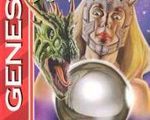
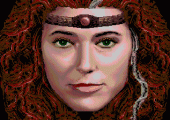
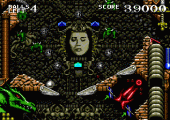
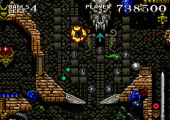
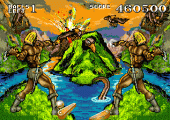
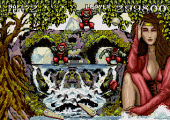
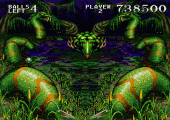
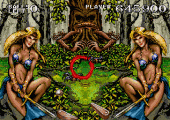
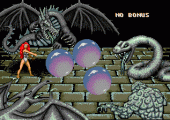
Recent Comments